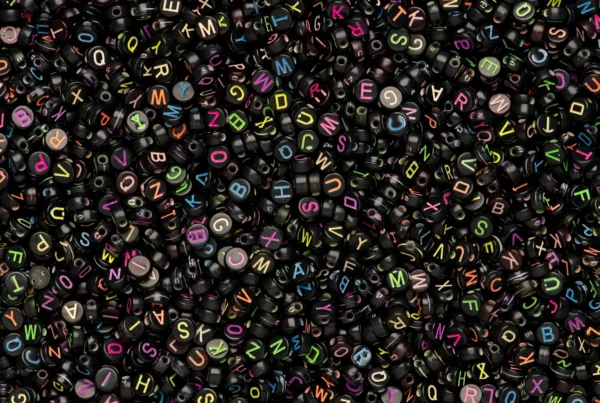Every brand has news to share with their community. Whether it’s an upcoming sale, a project, or a simple update, maintaining a close and open relationship with your clients and business partners is paramount. Here is where newsletters come into play. They are direct, customizable and when done properly, an amazing tool for your marketing efforts.
In this article, I’ll explain why you should still use newsletters in 2022 and share some tips for creating an efficient brand newsletter.
What is an email newsletter?
Email newsletter are direct emails, designed to inform your subscribers about a specific event, promotion, sale, or news. Newsletters can also be used to spread new or important content, such as your most recent articles, videos, or social media content.
They are sent (ideally) only to the people who have subscribed and who have agreed to receive messages from a specific brand and its partners.
A newsletter is essentially a form of communication between you and your target audience. With virtually no restrictions on what it can include, you still have to be mindful about its content and design. They always have to be in line with the brand guidelines!
Are newsletters still a useful marketing tool?
In today’s digital world, if your newsletter contains interesting content, ad promotions, and a well-designed layout, it can impact in a positive way your sales, profit, and, of course, your ability to maintain good relationships with your customers.
And since social networks put more and more emphasis on paid content, it’s clear to see why having a direct channel to your clients could be a better and cheaper way to keep them interested and up to date.
According to HubSpot 74% of Baby Boomers think email is the most personal channel to communicate with brands while 4 out of 5 marketers said they’d rather give up social media than email marketing.
Is newsletter design important?
As I mentioned earlier, the newsletter design is sometimes as important as the content inside. In a Blacklinko article, 43% of people said that one of the reasons they chose to unsubscribe is they didn’t recognize the brand. So why is newsletter design important?
- Makes your brand credible. When your newsletter’s design aligns with your company’s website design, it becomes more recognizable and trustworthy. Make an effort to use the same fonts and colors.
- Influences the CTR (click-through rates) rate. Often, people think that newsletters only contain text. But design also plays a significant role in building a brand newsletter. Design is more than just graphics and pictures. It’s a visual structure that influences email open rates.
- Impacts smartphone users’ flexibility. Many people read their emails while on the phone. Your newsletter would be read on a mobile device rather than a desktop computer. As a result, it’s critical to make your newsletters mobile-friendly and appealing. This will increase the number of times people open your emails.
Don’t forget! Newsletters are useful for keeping your audience up to date and for increasing traffic and sales.
Tips and tricks for building your brand newsletter
Search for the right tool
Before you begin, you will need a tool to help you quickly distribute the newsletter to everyone. There is a lot of software available for this, with MailChimp being one of the most popular. The best tools simplify campaign and list management and handle all of the technicalities of sending a large number of emails without being blacklisted for spamming.
Find out who your subscribers are
Before you begin designing your newsletter, you must first determine its purpose. Maybe you want to inform people about a new service you’re offering or an update to an existing one. Or maybe you want to write about special offers, sneak peeks, or discounts. Whatever topics you choose, keep your recipients in mind. What do you think they’re interested in? Make your newsletter user-friendly by writing as if you were speaking and making it easy to read.
Choose your newsletter format
Numerous studies have concluded that 600px is the gold standard for email width. The good news is that if you use a professional email service provider, your email design templates will already be this width.You should also ensure that your email looks good on all devices. You’ll want email newsletter templates that you can easily customize to fit your branding and content.
Add some personality to your newsletter
It’s important that your readers instantly recognize that the email has come from you when they open it.This means you’ll include your logo as well as a photo or avatar that you use on social media. Consistency is important to subscribers. So don’t switch email newsletter design templates at random.
Pay attention to typography
The fonts you use have a significant impact on how your newsletter is perceived. Email newsletters appear differently in different email clients and web browsers. To maintain a consistent look, use web-safe fonts. It’s also important not to use too many fonts.You need to use a headline and body text font, and one more for occasional contrast.
You can use regular and bold versions of the same fonts for body text and headlines. Whatever you choose, keep it simple. Don’t try to make your newsletter look fancy. Also, keep your branding consistent by using the same fonts in your email newsletter.
Choose the right images
Images can be an excellent way to communicate your message to your readers. Choose those you like and believe reflect your brand. Take time to make the images look as good as possible by using Photoshop or illustrator. If you want to use video in your newsletter, consider your target audience and the technology they are likely to be using.
Set up your colors
Colors are important when creating a brand newsletter because they aid in brand recognition, are visually appealing, and influence purchase decisions. For example:
- The red color causes FOMO (fear of missing out), or the fear of losing something important. Because red attracts attention, it is frequently used in promotional messages.
- The pink color is extremely versatile and adds a bit of luxury to your brand image. That is why it is the first choice of many women’s brands such as Victoria’s Secret or Barbie.
- The orange color is used most in the fitness, logistics and technology sector.
- The green color is an effective color for organic cosmetics brands, but also for companies in the niche of health, food and fitness.
- The blue color inspires confidence, accuracy, emphasises stability, boosts productivity and reduces stress. These are features that many popular brands, such as financial, naval, airline, including social media and IT giants, have.
Don’t forget! You should constantly use the color palette specific to your brand to increase its recognition.
Don’t forget about CTA!
Finally, the success of your brand newsletter will be determined by how many clicks it receives. The call to action (CTA) is an important part of getting subscribers to engage. A well-designed call to action should be: visible, actionable, appear as a link or button, be included in an email at least three times.
In the end remember:
- Keep text short. Divide the content into sections to highlight the most important information.
- Use large-sized accessible fonts. Avoid text walls.
- Create a vibrant color palette and play with patterns.
- Take advantage of seasonal content.
- Share your stories. Encourage your audience to DIY.
- Ask for feedback.
- Ensure that your newsletter is GDPR compliant, responsive, and displays properly.
- Send yourself a TEST newsletter to accomplish that everything, including links, functions properly.
- Analyze your results and re-adapt your future newsletters based on your success.
We may have access to additional social media platforms to improve our communication and promotion with customers but, email newsletter marketing will never go out of style. So, let’s brand your newsletter to become more recognizable and trustworthy.
Photo credits: LadyBB on Pixabay.com








One Comment